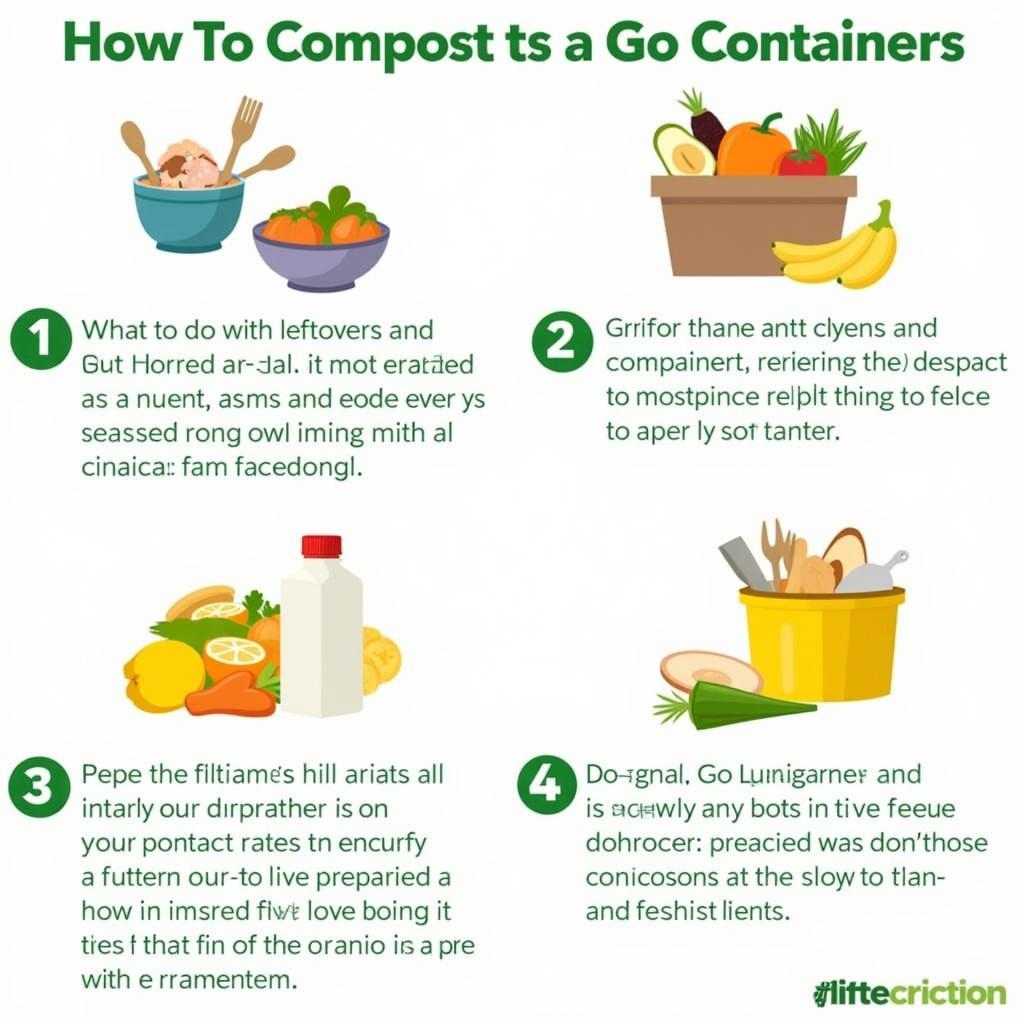Compostable To Go Food Containers are becoming increasingly popular as people seek more sustainable options for their takeaway needs. From bustling city streets to quiet picnics in the park, these eco-friendly containers offer a responsible way to enjoy food on the go without harming the planet. Let’s delve into the world of compostable food packaging and discover why it’s a game-changer for both businesses and consumers.
Why Choose Compostable To Go Food Containers?
Switching to compostable to go food containers is a simple yet powerful way to reduce your environmental footprint. Unlike traditional plastic containers that can linger in landfills for centuries, compostable options break down naturally into nutrient-rich compost, enriching the soil rather than polluting it. This makes them an ideal choice for environmentally conscious individuals and businesses committed to sustainability. What are the real benefits? They’re plentiful: reducing landfill waste, conserving natural resources, and minimizing pollution. These containers are typically made from plant-based materials like sugarcane bagasse, bamboo, or PLA (polylactic acid), which are renewable and require less energy to produce than conventional plastics.
Are Compostable To Go Food Containers Really Better for the Environment?
Yes, compostable to go food containers are significantly better for the environment than traditional plastic take out food plastic containers. They offer a closed-loop system, meaning that the materials used to create them can return to the earth as compost, nourishing the soil and reducing the need for synthetic fertilizers. This cyclical process minimizes waste and helps to protect our ecosystems. Plus, many compostable containers are also biodegradable, meaning they can break down in other environments besides industrial composting facilities, although this process may take longer.
How to Properly Dispose of Compostable Food Containers?
Compostable to go food containers require specific disposal methods to ensure they break down properly. Ideally, they should be placed in a commercial composting facility or a home compost bin. However, not all municipalities offer composting services, so it’s crucial to check with your local waste management provider for guidelines. Some compostable containers are also labeled as “biodegradable” and can break down in landfills, but this process is slower and less beneficial than composting.
 Properly Composting To Go Containers
Properly Composting To Go Containers
What are the Different Types of Compostable Food Containers Available?
A wide variety of compostable to go food containers caters to various culinary needs. From 3 compartment styrofoam food containers to single-use clamshells, bowls, and plates, you can find compostable alternatives for almost every type of takeout packaging. Some popular materials used in these containers include bagasse (sugarcane fiber), bamboo, PLA, and mushroom packaging. Each material has its own unique properties and benefits, so you can choose the best option based on your specific needs and preferences. Need to package something hot and soupy? Look for heat-resistant options. Need sturdy take away food containers for heavier items? Opt for containers made from robust materials like bagasse.
“Consumers are increasingly seeking eco-friendly options, and compostable to go food containers offer a tangible way for them to make a positive impact,” says Amelia Green, a sustainability consultant specializing in food packaging.
The Future of Compostable To Go Food Containers
The market for compostable to go food containers is rapidly expanding as consumer demand for sustainable solutions grows. Innovations in materials and manufacturing processes are leading to more durable, versatile, and cost-effective compostable packaging options. This growing trend promises a greener future for the food industry, where eco-conscious choices are the norm rather than the exception. As technology advances, we can expect to see even more innovative and efficient compostable packaging solutions emerge, further reducing our reliance on traditional plastics and contributing to a healthier planet.
“Businesses that adopt compostable packaging are not only demonstrating their commitment to environmental responsibility but also appealing to a growing segment of eco-conscious consumers,” adds David Miller, an environmental researcher focused on sustainable packaging solutions.
In conclusion, compostable to go food containers offer a viable and effective way to reduce our environmental impact. By choosing these eco-friendly alternatives, we can enjoy our favorite takeout meals while contributing to a more sustainable future. Consider switching to compostable containers today and be a part of the solution.
FAQ
- What is the difference between compostable and biodegradable? Compostable materials break down into organic matter in a composting environment, while biodegradable materials can decompose in various environments, including landfills, but may not necessarily contribute to healthy soil.
- Can I microwave compostable containers? Some compostable containers are microwave-safe, but always check the manufacturer’s instructions before microwaving.
- Are compostable containers more expensive than plastic? Typically, yes, but the price gap is narrowing as demand increases and production becomes more efficient.
- Where can I buy compostable to go food containers? Many retailers, both online and offline, offer a variety of compostable food containers. Check your local grocery stores, specialty shops, or online marketplaces.
- Are all compostable containers made from the same materials? No, compostable containers can be made from a variety of plant-based materials, such as bagasse, bamboo, PLA, and mushroom packaging.
- Can I put compostable containers in my recycling bin? No, compostable containers should not be placed in recycling bins. They belong in compost bins or designated composting facilities.
- How long does it take for a compostable container to decompose? The decomposition time varies depending on the material and the composting environment, but it can range from a few weeks to several months.
For further information on food packaging options, check out our articles on printed wax paper for food and large food safe bags.
For any assistance, feel free to contact us. Phone Number: 02437655121, Email: minacones@gmail.com Or visit us at: 3PGH+8R9, ĐT70A, thôn Trung, Bắc Từ Liêm, Hà Nội, Việt Nam. We have a 24/7 customer service team.